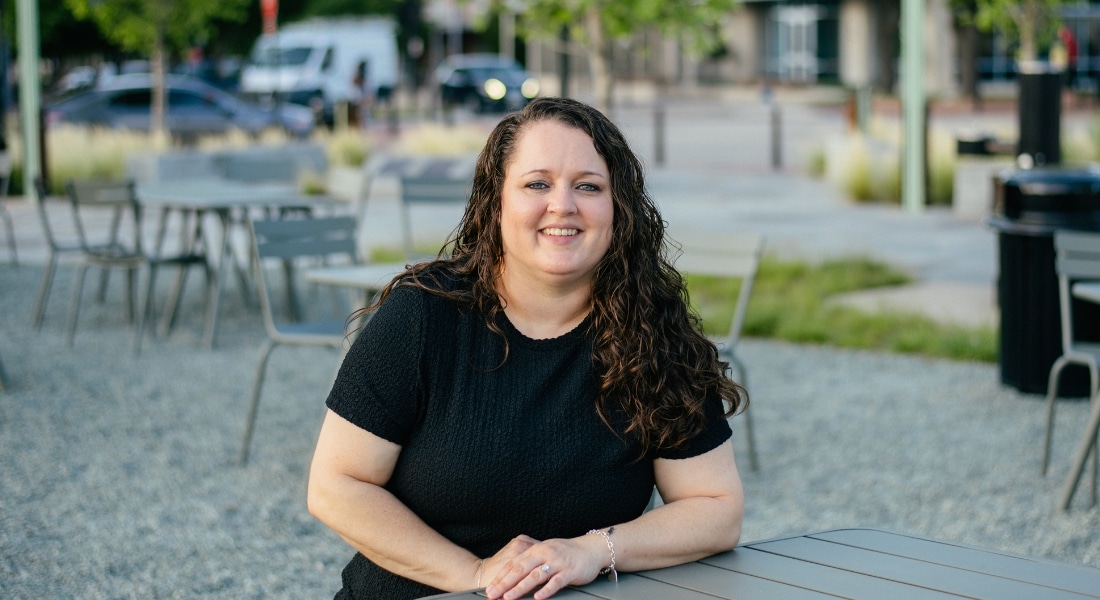When a suspected case of kidney stones revealed a tumor on Amanda Hopkins’ liver, she chose a minimally invasive solution at Methodist Richardson Medical Center over the “wait and see” approach.
After all, it was the second time in five years that a CT scan turned up a benign growth for the 37-year-old mother of two from Garland. And once again, exhaustion and gastrointestinal problems were making her life miserable late last year.
“I never expected to hear ‘we found something’ for the second time,” says Amanda, who at age 32 had surgery to remove an ovarian cyst, discovered during surgery to correct a bad case of kidney stones.
Initially advised to watch and wait, Amanda sought a second opinion from Methodist Richardson. And she’s glad she did.
“I loved my care at Methodist Richardson,” she says. “I feel like a new person.”

Healthier than she’s been in years, Amanda says she finally has the energy to keep up with her kids.
TUMOR AS BIG AS AN APPLE
Years ago, Amanda had a painful case of kidney stones that required doctors to place a stent to help them pass.
During that procedure, her surgeon found an ovarian cyst. The surgery to remove it led to the discovery and treatment of stage four endometriosis, a painful condition in which tissue that is similar to the lining of the uterus grows outside of that organ.
Five years later, Amanda felt a sense of déjà vu after learning she had a tumor the size of an apple on her liver, what’s known as a hepatocellular adenoma — generally benign tumors that form on the organ.
“My primary care physician wanted to take the standard ‘wait and see’ approach,” she says. “This meant I would have another MRI in six months to see if the tumors had grown before making a decision on whether or not they needed to be removed.”
Given her medical history, Amanda wasn’t comfortable with waiting.
Trust your gut to advanced GI care at Methodist by finding a digestive health specialist near you. Visit MethodistHealthSystem.org
NO NEED TO WAIT AND SEE
Amanda immediately knew she was in the right hands after one appointment with her surgeons on the medical staff at Methodist Richardson.
At their recommendation, Amanda agreed to have the tumor removed. While the growth was benign, liver adenomas like hers have a significant risk for complications, including bleeding, rupture, and even the development of long-term cancer.
In years past, removing part of the liver wasn’t nearly as safe as it is now, so a “wait and see” approach became the standard. Now, liver resection is safe and can be done with minimally invasive technology.

Feeling ‘like a new person’ means happier days with her kids and everyone else she cares about.
MINIMALLY INVASIVE SURGERY
On Dec. 18, 2023, Amanda had the tumor and about a third of her liver removed by a team led by Houssam Osman, MD, hepatobiliary surgeon on the medical staff at Methodist Richardson.
Performed laparoscopically, this minimally invasive approach meant a shorter hospital stay for Amanda, as well as a less painful recovery and lower complication rates.
The surgery was a success in more than one way: Her surgeons also discovered early stages of fatty liver disease, which can lead to serious liver complications if it goes undetected.
Amanda again turned her life around and changed her diet and is losing weight to protect her health.
“I didn’t realize how bad I had been feeling for the last few years,” she says. “My bloodwork is great, my symptoms are gone and I finally have the energy to keep up with my kids and live my life.”






